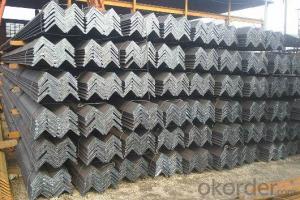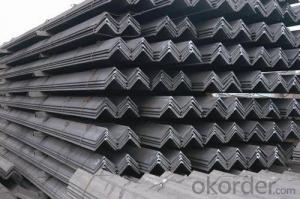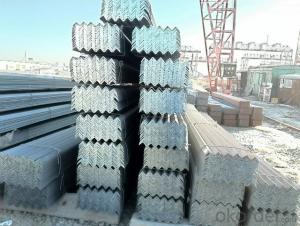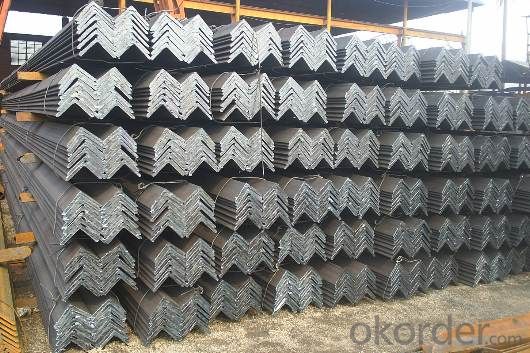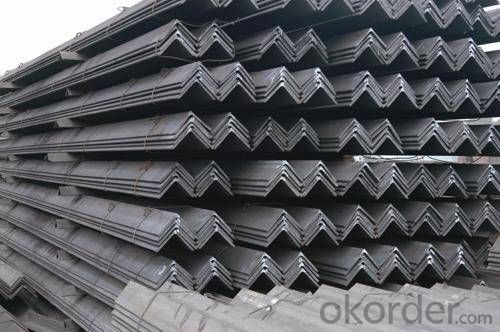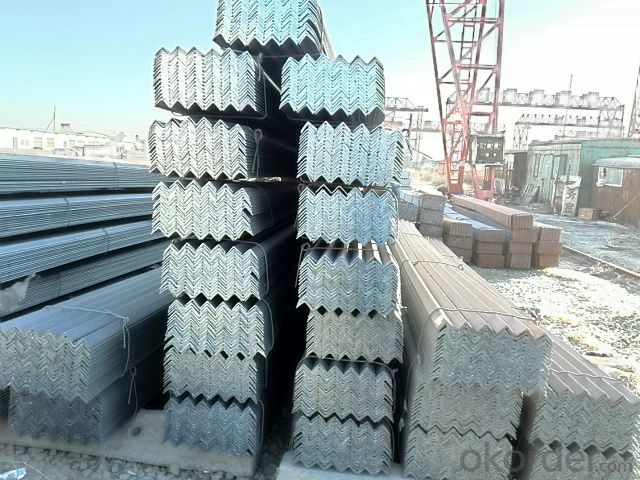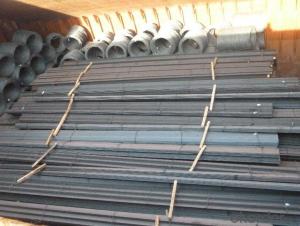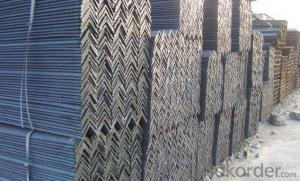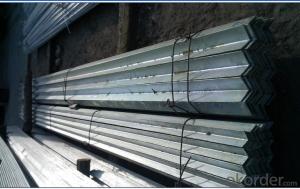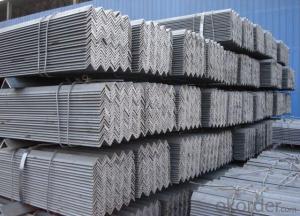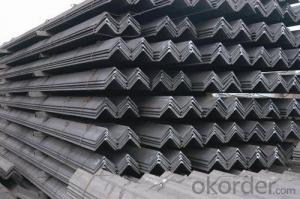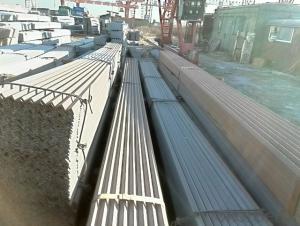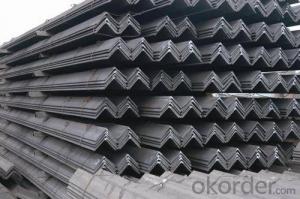Hot Rolled Angle Steel Bars with Best Quality
- Loading Port:
- Tianjin
- Payment Terms:
- TT OR LC
- Min Order Qty:
- 25 m.t
- Supply Capability:
- 10000 m.t/month
OKorder Service Pledge
OKorder Financial Service
You Might Also Like
OKorder is offering Hot Rolled Equal Angles at great prices with worldwide shipping. Our supplier is a world-class manufacturer of steel, with our products utilized the world over. OKorder annually supplies products to European, North American and Asian markets. We provide quotations within 24 hours of receiving an inquiry and guarantee competitive prices.
Product Applications:
Hot Rolled Equal Angles are ideal for structural applications and are widely used in the construction of buildings and bridges, and the manufacturing, petrochemical, and transportation industries.
Product Advantages:
OKorder's Hot Rolled Equal Angles are durable, strong, and resist corrosion.
Main Product Features:
· Premium quality
· Prompt delivery & seaworthy packing (30 days after receiving deposit)
· Corrosion resistance
· Can be recycled and reused
· Mill test certification
· Professional Service
· Competitive pricing
Product Specifications:
Manufacture: Hot rolled
Grade: Q195 – 235
Certificates: ISO, SGS, BV, CIQ
Length: 6m – 12m, as per customer request
Packaging: Export packing, nude packing, bundled
Sizes: 25mm-250mm | ||
a*t | ||
25*2.5-4.0 | 70*6.0-9.0 | 130*9.0-15 |
30*2.5-6.6 | 75*6.0-9.0 | 140*10-14 |
36*3.0-5.0 | 80*5.0-10 | 150*10-20 |
38*2.3-6.0 | 90*7.0-10 | 160*10-16 |
40*3.0-5.0 | 100*6.0-12 | 175*12-15 |
45*4.0-6.0 | 110*8.0-10 | 180*12-18 |
50*4.0-6.0 | 120*6.0-15 | 200*14-25 |
60*4.0-8.0 | 125*8.0-14 | 250*25 |
FAQ:
Q1: Why buy Materials & Equipment from OKorder.com?
A1: All products offered byOKorder.com are carefully selected from China's most reliable manufacturing enterprises. Through its ISO certifications, OKorder.com adheres to the highest standards and a commitment to supply chain safety and customer satisfaction.
Q2: How do we guarantee the quality of our products?
A2: We have established an advanced quality management system which conducts strict quality tests at every step, from raw materials to the final product. At the same time, we provide extensive follow-up service assurances as required.
Q3: Can stainless steel rust?
A3: Stainless does not "rust" as you think of regular steel rusting with a red oxide on the surface that flakes off. If you see red rust it is probably due to some iron particles that have contaminated the surface of the stainless steel and it is these iron particles that are rusting. Look at the source of the rusting and see if you can remove it from the surface.
Images:
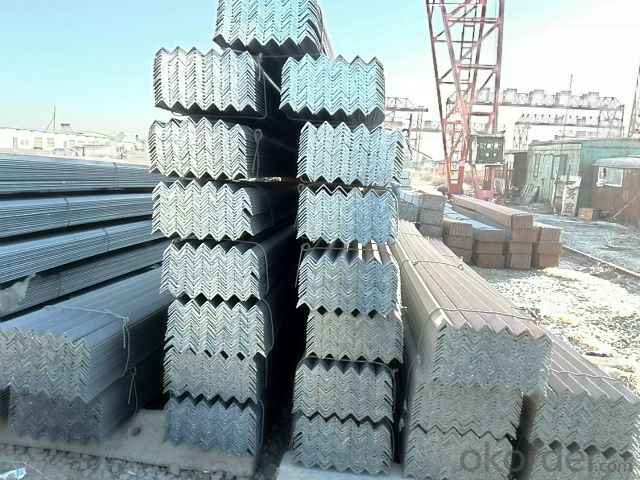
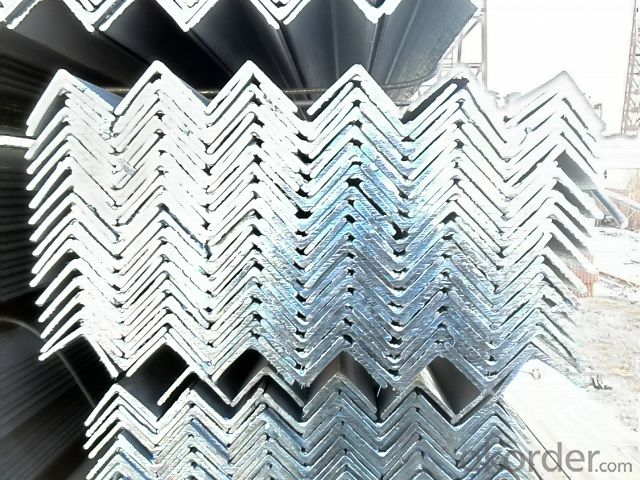
- Q: Are steel angles magnetic?
- Yes, steel angles are magnetic. Steel is a ferromagnetic material, which means it can be magnetized and attracted to a magnet. Steel angles, being made of steel, inherit this magnetic property. The presence of iron, along with other elements, in the composition of steel makes it responsive to magnetic fields. This property is often utilized in various applications such as in the construction industry, where steel angles are commonly used for structural support.
- Q: Can steel angles be painted over?
- Yes, steel angles can be painted over. Prior to painting, it is important to clean and prepare the surface by removing any rust, dirt, or grease. Applying a primer will help improve adhesion and longevity of the paint. Once the primer is dry, a suitable paint can be applied to achieve the desired finish and protect the steel angles from corrosion.
- Q: How do you measure the dimensions of a steel angle?
- To measure the dimensions of a steel angle, you can use a measuring tape or ruler to determine the length of the two sides that form the angle. Additionally, you can measure the thickness of the steel angle using a caliper or a micrometer.
- Q: How can steel angles be protected against corrosion?
- There are various methods available to protect steel angles from corrosion. One commonly used method is the application of protective coatings. These coatings serve as a barrier between the steel angles and corrosive elements, preventing direct contact and inhibiting corrosion. Paint, epoxy, or zinc-based materials can be utilized for this purpose. Another effective approach is galvanization, which entails coating the steel angles with a layer of zinc. This zinc layer acts as a sacrificial anode, meaning that when corrosion takes place, the zinc layer will corrode first, safeguarding the steel beneath. This method is particularly advantageous in harsh environments like marine or industrial settings. To prevent corrosion, regular maintenance and inspection are crucial. Any damage or deterioration to the protective coating should be promptly addressed to ensure ongoing protection. Additionally, keeping the steel angles clean and free from debris or moisture buildup can also aid in corrosion prevention. In certain situations, cathodic protection may be employed. This involves connecting the steel angles to a sacrificial anode composed of a more reactive metal, such as aluminum or magnesium. By sacrificing itself, the anode shields the steel angles against corrosion. Lastly, proper design and installation of steel angles can also contribute to their corrosion resistance. Ensuring sufficient drainage and ventilation, using materials that are compatible with the environment, and minimizing exposure to corrosive elements are all factors that can help protect steel angles against corrosion.
- Q: Can steel angles be used as reinforcements in concrete structures?
- Yes, steel angles can be used as reinforcements in concrete structures. Steel angles are commonly used to provide additional strength and support to concrete elements, such as beams, columns, and slabs. They are placed within the concrete to enhance its load-bearing capacity, improve structural integrity, and prevent cracking or failure. The versatility and durability of steel angles make them suitable for reinforcing various types of concrete structures.
- Q: Can steel angles be used in modular construction or prefabricated structures?
- Yes, steel angles can be used in modular construction or prefabricated structures. Steel angles are versatile and commonly used structural elements that can provide strength and stability to modular and prefabricated buildings. They can be used to create the framework, support walls, floors, and roofs, as well as reinforce connections and corners in these structures. Steel angles are preferred for their high strength-to-weight ratio, durability, and ease of fabrication, making them a suitable choice for modular and prefabricated construction projects.
- Q: How do you prevent galvanic corrosion in steel angles?
- There are several measures that can be taken to prevent galvanic corrosion in steel angles. 1. Utilizing a proper coating, such as paint, epoxy, or galvanization, can establish a barrier between the steel angle and other metals. This creates a separation, reducing the chance of galvanic corrosion. 2. Insulation materials, like rubber or plastic washers, gaskets, or sleeves, can be employed to isolate the steel angle from other metals. This prevents the flow of electrical currents and decreases the likelihood of galvanic corrosion. 3. It is crucial to consider the compatibility of different metals when designing structures or systems involving steel angles. Pairing metals with similar electrochemical properties can minimize the risk of galvanic corrosion. 4. Regular maintenance is essential in identifying and addressing early signs of galvanic corrosion in steel angles. This includes inspecting the protective coating for any damage, ensuring proper insulation, and applying appropriate remedies if corrosion is detected. By incorporating these preventive measures, the risk of galvanic corrosion in steel angles can be significantly reduced, guaranteeing their durability and structural integrity.
- Q: Are steel angles resistant to corrosion?
- Yes, steel angles are generally resistant to corrosion. Steel angles are commonly made from carbon steel or stainless steel, both of which have inherent corrosion-resistant properties. Carbon steel angles have a protective layer of iron oxide, known as rust, which forms on their surface when exposed to oxygen and moisture. This rust layer acts as a barrier, preventing further corrosion of the underlying metal. Stainless steel angles, on the other hand, contain a minimum of 10.5% chromium, which forms a thin, transparent oxide layer on the surface. This oxide layer, called a passive film, provides excellent corrosion resistance, making stainless steel angles highly resistant to rust and other forms of corrosion. However, it is important to note that steel angles can still corrode under certain conditions, such as prolonged exposure to high levels of moisture or corrosive chemicals. Regular maintenance and proper cleaning can help extend the lifespan of steel angles and enhance their corrosion resistance.
- Q: What does "angle length" and "limb width" mean?
- Also available models that model is the number of centimeters wide, such as angle 3#. The model does not mean the size of the different edges and sizes of the same model. Therefore, the width, the edge and the thickness of the angle iron should be filled out in the contract and other documents, so as not to be indicated by the model alone. Standard Specification for hot-rolled equal angle iron is 2#-20#. The angle iron can be made up of different force components according to the different structure, and can also be used as the connecting piece between the components. Widely used in a variety of architectural and engineering structures, such as beams, bridges, towers, hoisting and conveying machinery, ships, industrial furnace, reaction tower, container frame and warehouse.
- Q: What are the different finishes available for steel angles?
- There are several different finishes available for steel angles, including hot-dip galvanized, mill finish, painted, and powder coated.
Send your message to us
Hot Rolled Angle Steel Bars with Best Quality
- Loading Port:
- Tianjin
- Payment Terms:
- TT OR LC
- Min Order Qty:
- 25 m.t
- Supply Capability:
- 10000 m.t/month
OKorder Service Pledge
OKorder Financial Service
Similar products
Hot products
Hot Searches
Related keywords
